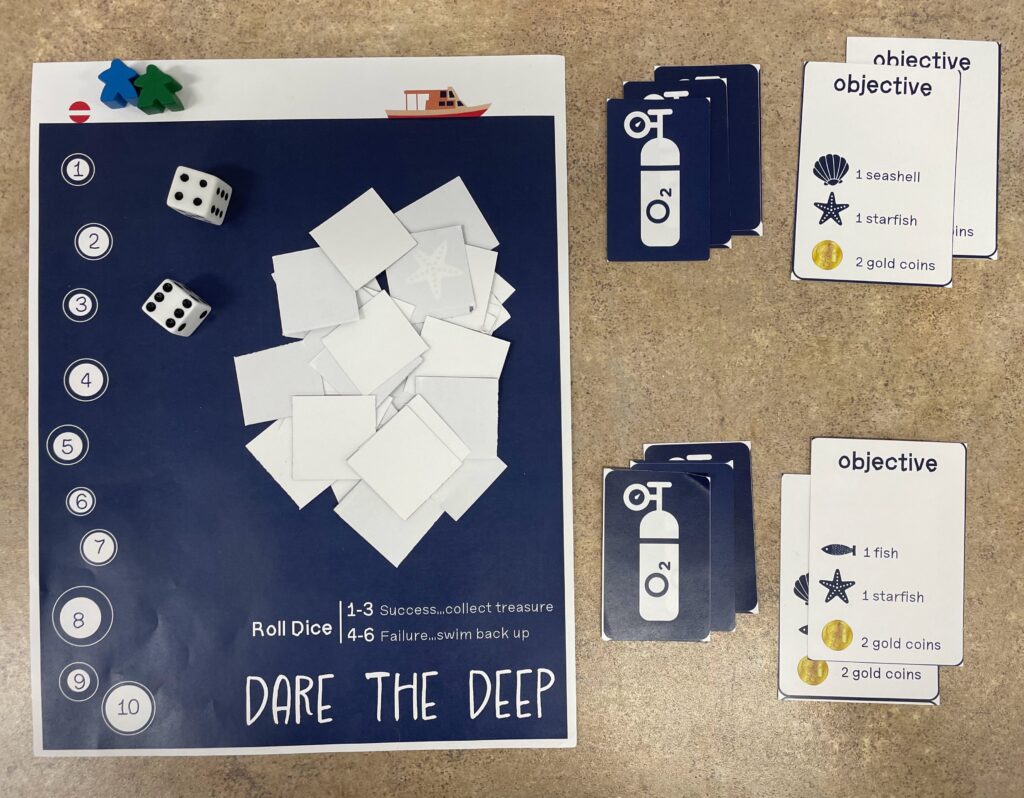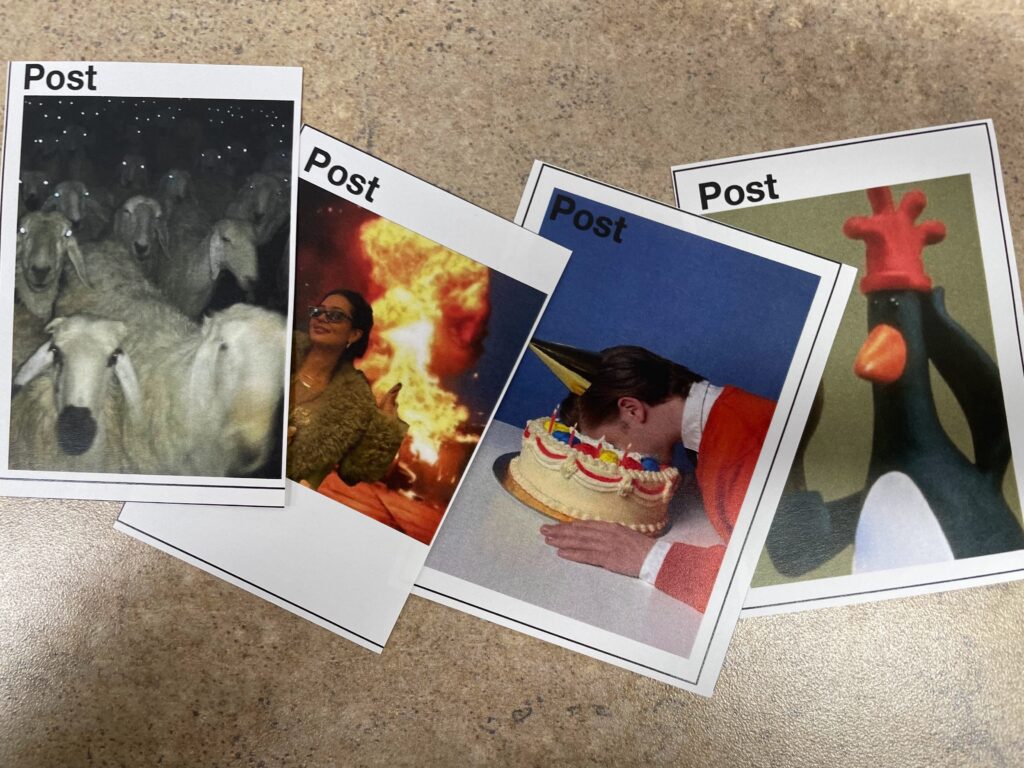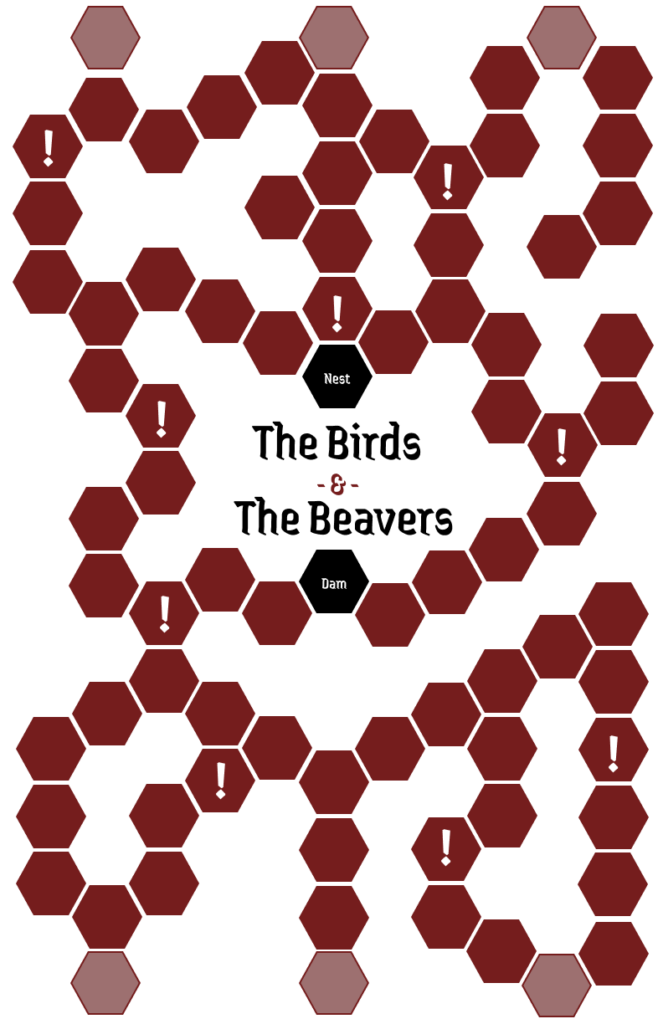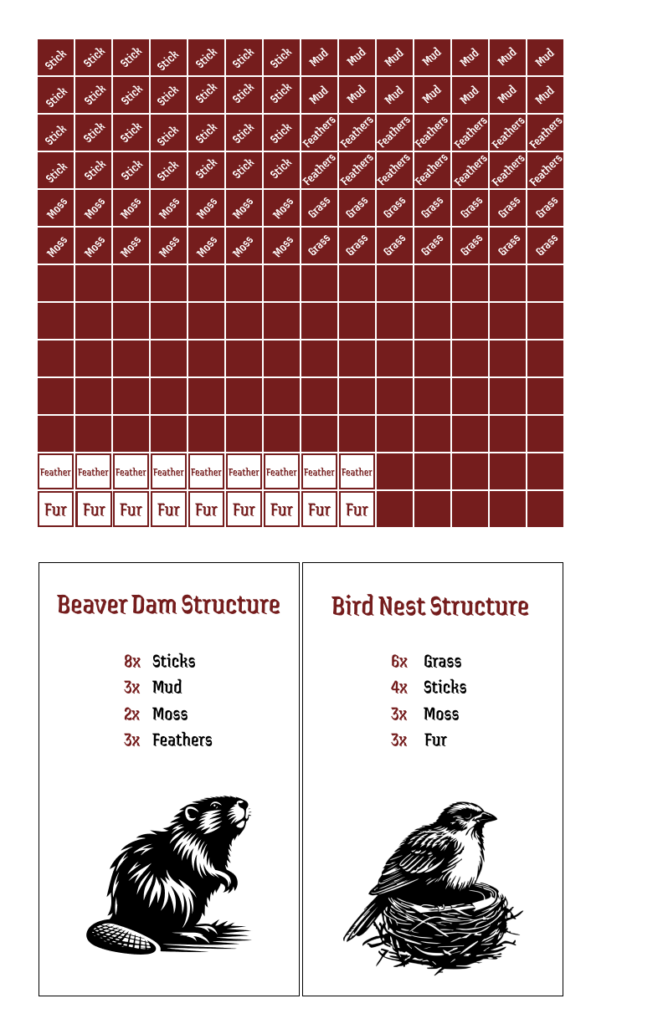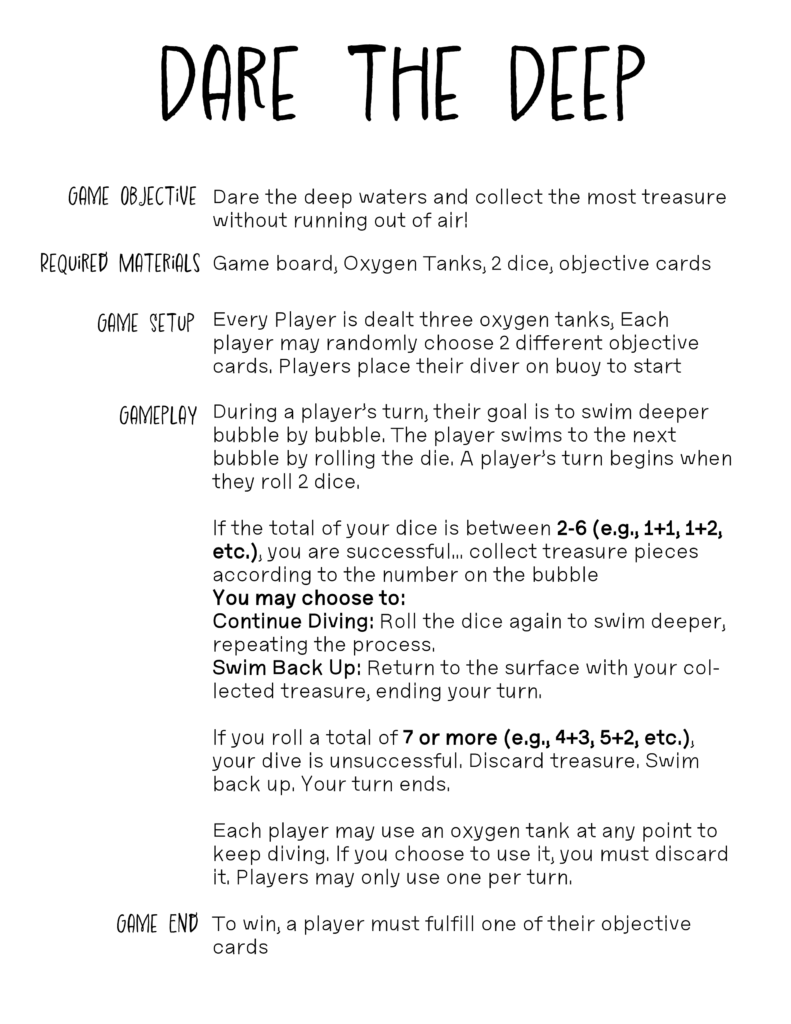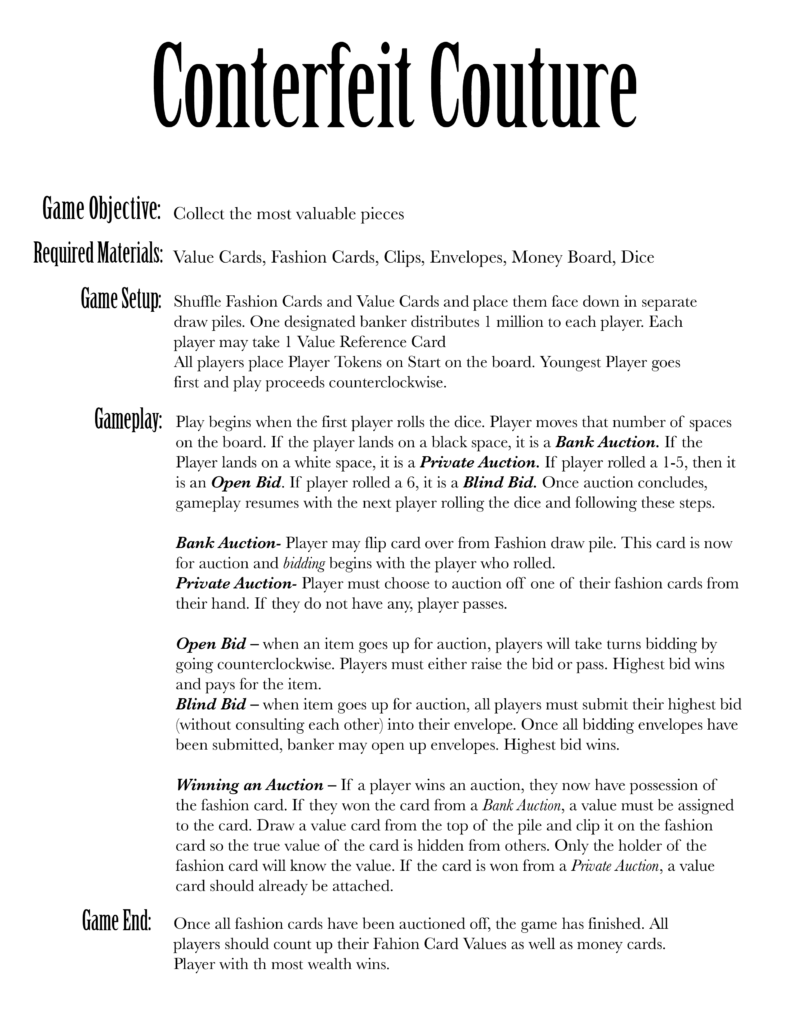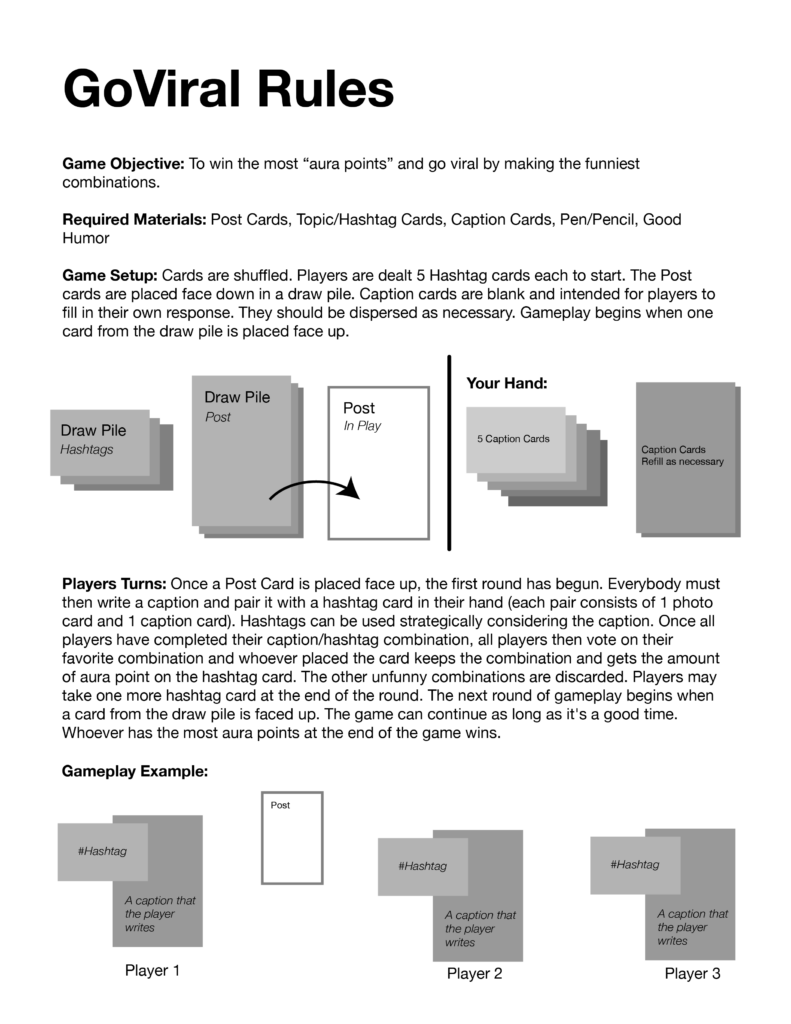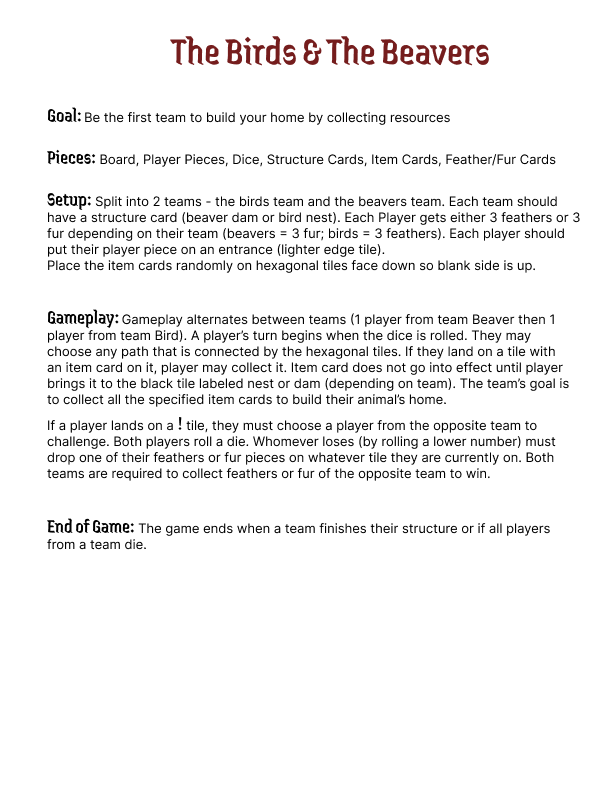
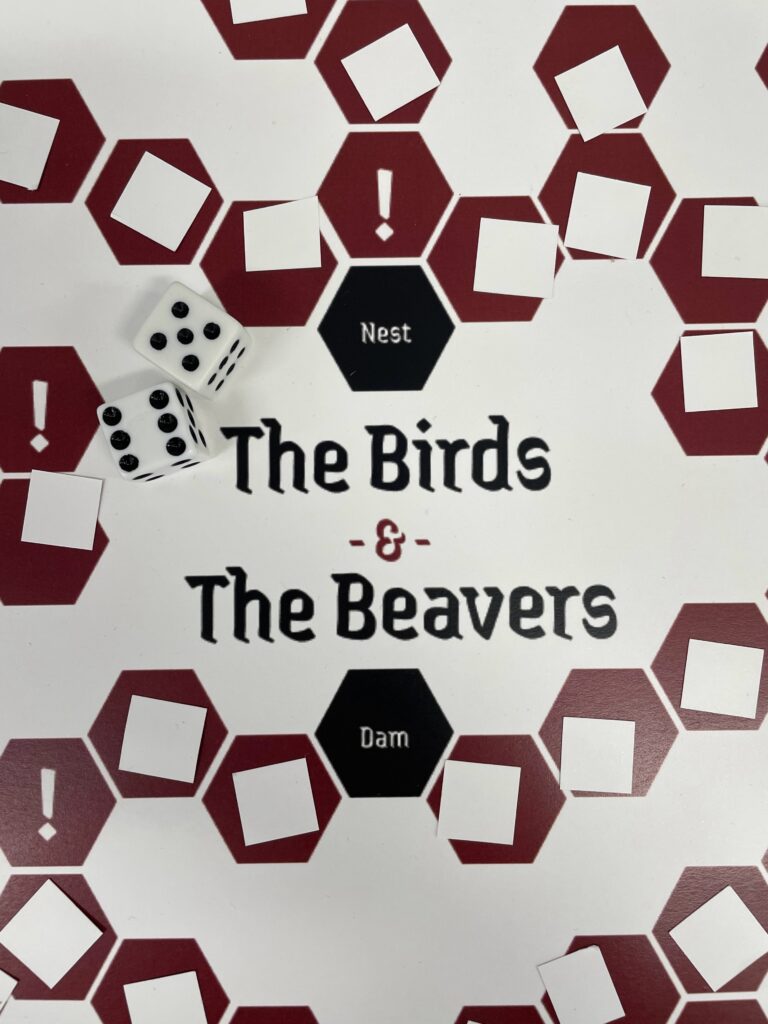
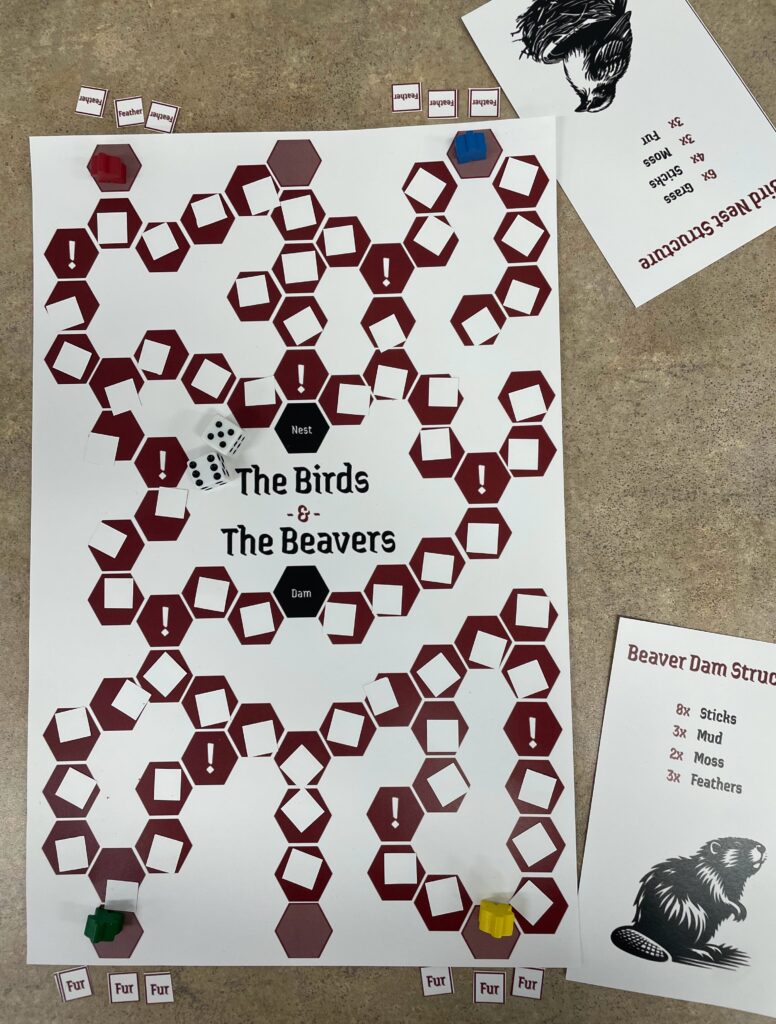
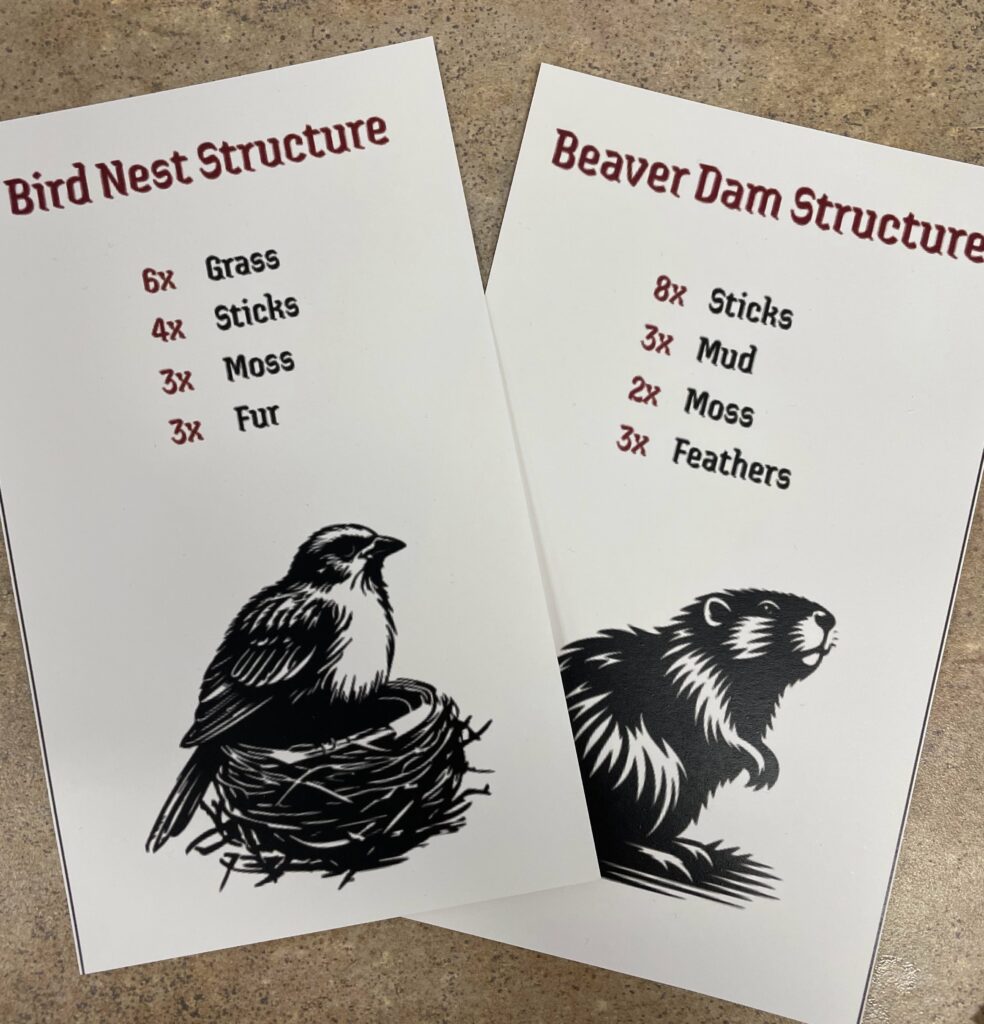

We have not made any changes after this original prototype.
If I were to make further iterations of this, I would make minor mechanics tweaks and then enhance the design. First, I would add the ability to trade in useless resources for one players want at a 4:1 ratio. I would also add the ability to collect your teammates lives for them (but if they are dead they stay dead). Next, I would specify that a player does not need to roll the exact number to land in their teams home and place resources. Other than that, all changes would be cosmetic. I would flip “The Birds” and “nest” so it would be facing the birds team. I would make the board out of a thicker material and all of the spaces would be indented for the resource pieces to fit in like a puzzle. The resource pieces would be hexagonal. Perhaps the Player Icons could be little birds and beavers.
The game worked very well. Mechanics worked and the game was cute. With these minor tweaks, it would be a great game! I would be interested in taking it further.



